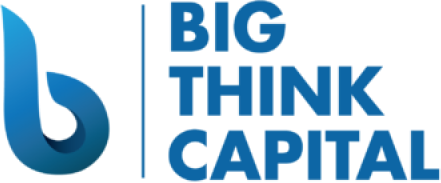Navigating the Rising Tide: Strategies for Thriving in a High Interest Rate Environment
Estimated Reading Time: 5 minutes
- Align funding needs with cash flow management.
- Enhance your credit standing.
- Communicate effectively with lenders.
Understanding the Current Landscape
Interest rates significantly influence how businesses operate, especially when it comes to borrowing. According to the Federal Reserve, the average interest rate on a 30-year fixed mortgage has risen to around 6.5%, while rates for business loans have experienced similar increases. In this environment, small businesses may face higher borrowing costs, which can squeeze cash flow and limit growth opportunities.
However, navigating these challenges is possible with informed strategies and adaptability. Below, we’ll outline tactics that can help you maintain financial health and seize opportunities.
1. Focus on Improving Cash Flow
Strong cash flow is the lifeblood of any business, particularly in a period of rising interest rates. As borrowing costs increase, having adequate cash flow can mitigate the need to take on expensive loans. Here are steps to enhance your cash flow:
- Review and Optimize Expenses: Conduct a thorough review of your operational expenses. Identify areas where you can cut costs without sacrificing quality. Implementing new technologies or streamlining processes can yield significant savings.
- Improve Invoicing Processes: Ensure that your invoicing is prompt and professional. Offering incentives for early payments can encourage clients and customers to pay sooner, improving your cash flow.
- Negotiate Payment Terms: Work with suppliers to extend payment terms. This can provide additional liquidity as you retain cash longer before needing to settle bills.
2. Explore Alternative Funding Options
As traditional loans become more expensive, alternative financing options provide viable solutions for small businesses. At Big Think Capital, we specialize in various funding products designed to meet diverse needs. Consider these alternatives:
- Merchant Cash Advances (MCA): If your business experiences fluctuating sales, an MCA may provide instant access to funds based on future credit card sales. This can be a flexible way to fund immediate needs without high-interest loans.
- Equipment Financing: If you require new equipment, consider financing options designed specifically for this purpose. Equipment financing often offers competitive rates and allows you to spread the costs over time, preserving your cash flow for other expenses.
- Lines of Credit: Establishing a line of credit can offer the flexibility to draw funds as needed. This form of funding lets you access additional capital without the commitment of a traditional loan, which is critical when interest rates are rising.
3. Strengthen Your Credit Profile
A strong credit profile can ease the terms of the financing you secure. Lenders offer better interest rates to borrowers who present lower risk. Here’s how to enhance your credit profile:
- Monitor Your Credit Reports: Regularly check your credit reports for inaccuracies or duplicate accounts. Disputing any errors can help improve your credit score and make you more attractive to lenders.
- Pay Bills on Time: Consistent on-time payments reinforce your creditworthiness. Set reminders or automate payments to avoid any missed deadlines.
- Limit New Credit Requests: While exploring financing options is essential, avoid applying for multiple loans simultaneously, as this can negatively impact your credit score. Focus on applications that align best with your needs.
4. Maintain Open Communication with Lenders
In uncertain times, maintaining transparent communication with your lenders can make a significant difference. Here are strategies to stay connected:
- Regular Check-ins: Establish routine updates with your financing partners. This can initiate valuable discussions around potential funding opportunities or restructuring existing loans to accommodate your current situation.
- Seek Guidance: Lenders, especially those experienced in small business funding, can provide insights into market trends. Their perspective on the best financial products can guide you to make informed decisions.
- Negotiation of Terms: If your business is facing challenges, don’t hesitate to negotiate the terms of your existing loans. Lenders may offer flexibility in repayment schedules or lower interest rates during difficult financial periods.
5. Strategically Plan for Future Growth
High-interest rates should not deter you from planning for the future. Instead, approach business growth strategizing more cautiously:
- Evaluate New Opportunities Carefully: In a high-interest environment, thorough research and assessment of new opportunities become even more crucial. Conduct cost-benefit analyses before committing to expanding your operations or launching new products.
- Invest in Marketing: Targeted marketing can enhance your customer base and boost sales. In times of economic uncertainty, investing wisely in marketing can drive profitable customer engagement, ensuring steady revenue flow.
- Build a Financial Reserve: As you evaluate costs and adjust your business strategy, prioritize building a financial reserve. This resilience will be invaluable in navigating future challenges and taking advantage of unforeseen opportunities.
Practical Takeaways
Navigating the current high-interest landscape may feel daunting, but with strategic planning, small businesses can not only survive but thrive. Here are three practical takeaways:
- Align Funding Needs with Cash Flow Management: Focus on solid cash flow management to alleviate the pressure of rising interest rates. Utilize alternative funding options tailored to your business needs.
- Enhance Your Credit Standing: A robust credit profile can unlock better financing options. Regularly monitor your credit and address any discrepancies while ensuring timely payments.
- Communicate with Lenders: Establishing open lines of communication fosters strong relationships with lenders, which can lead to more favorable terms and opportunities for future financing.
Conclusion
The current high-interest-rate environment poses challenges for small businesses but also presents opportunities for those who remain agile and informed. By focusing on cash flow, exploring alternative financing, strengthening your credit profile, maintaining communication with lenders, and strategically planning for growth, your business can successfully weather this economic tide.
At Big Think Capital, we are dedicated to supporting small businesses through tailored financing solutions. Whether you need working capital, equipment financing, or access to merchant cash advances, our experienced team is here to help.
Visit bigthinkcapital.com to learn more about our services and speak with a funding expert today. Your business success is our priority.
FAQ
What strategies can small businesses use to adapt to rising interest rates?
Small businesses can focus on improving cash flow, exploring alternative funding options, strengthening their credit profile, maintaining communication with lenders, and planning strategically for growth.
How can I improve my business’s cash flow?
You can enhance cash flow by reviewing and optimizing expenses, improving invoicing processes, and negotiating longer payment terms with suppliers.
What are alternative funding options for small businesses?
Options include merchant cash advances, equipment financing, and lines of credit, which can provide flexibility as traditional loans become more expensive.






